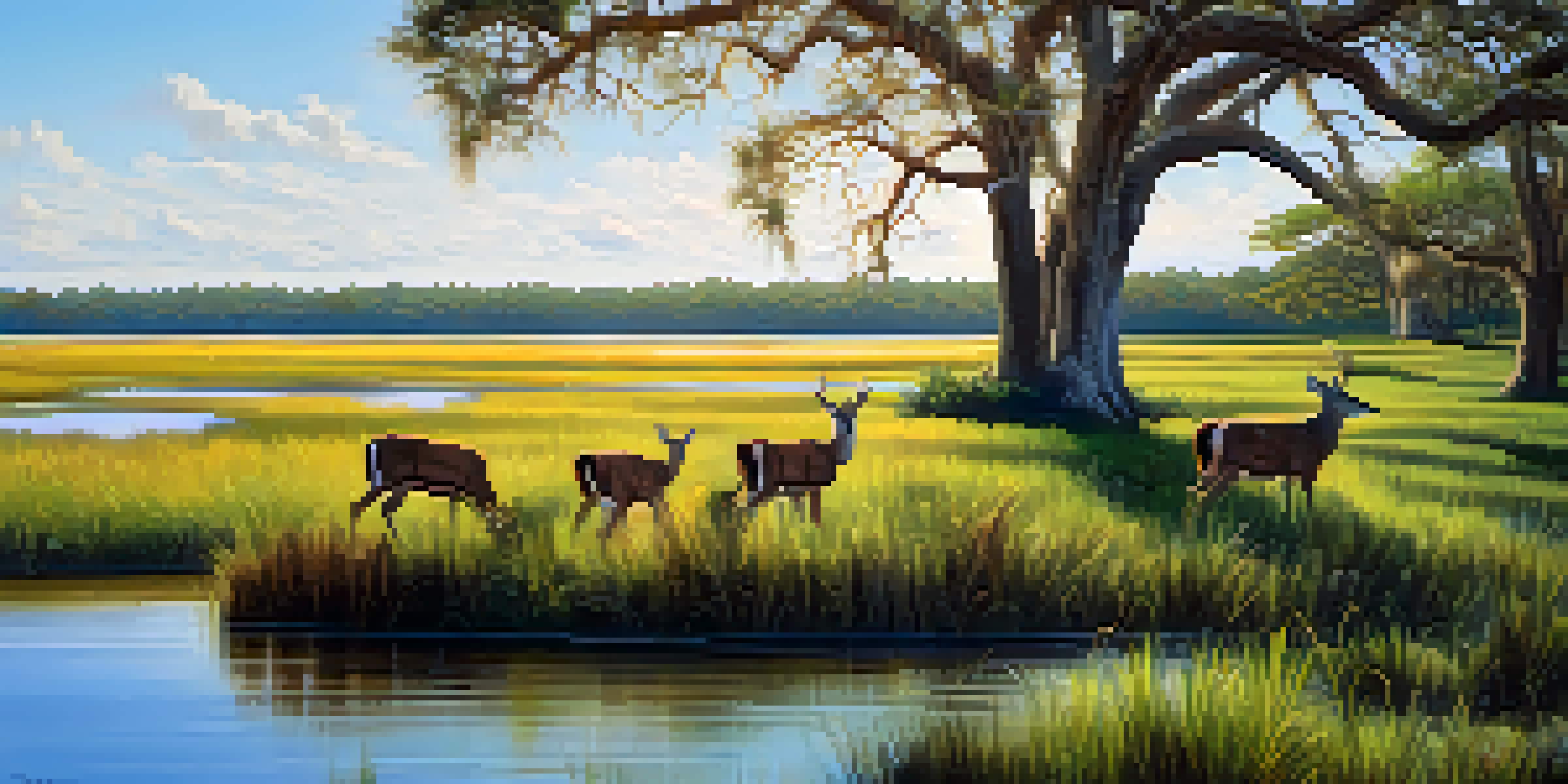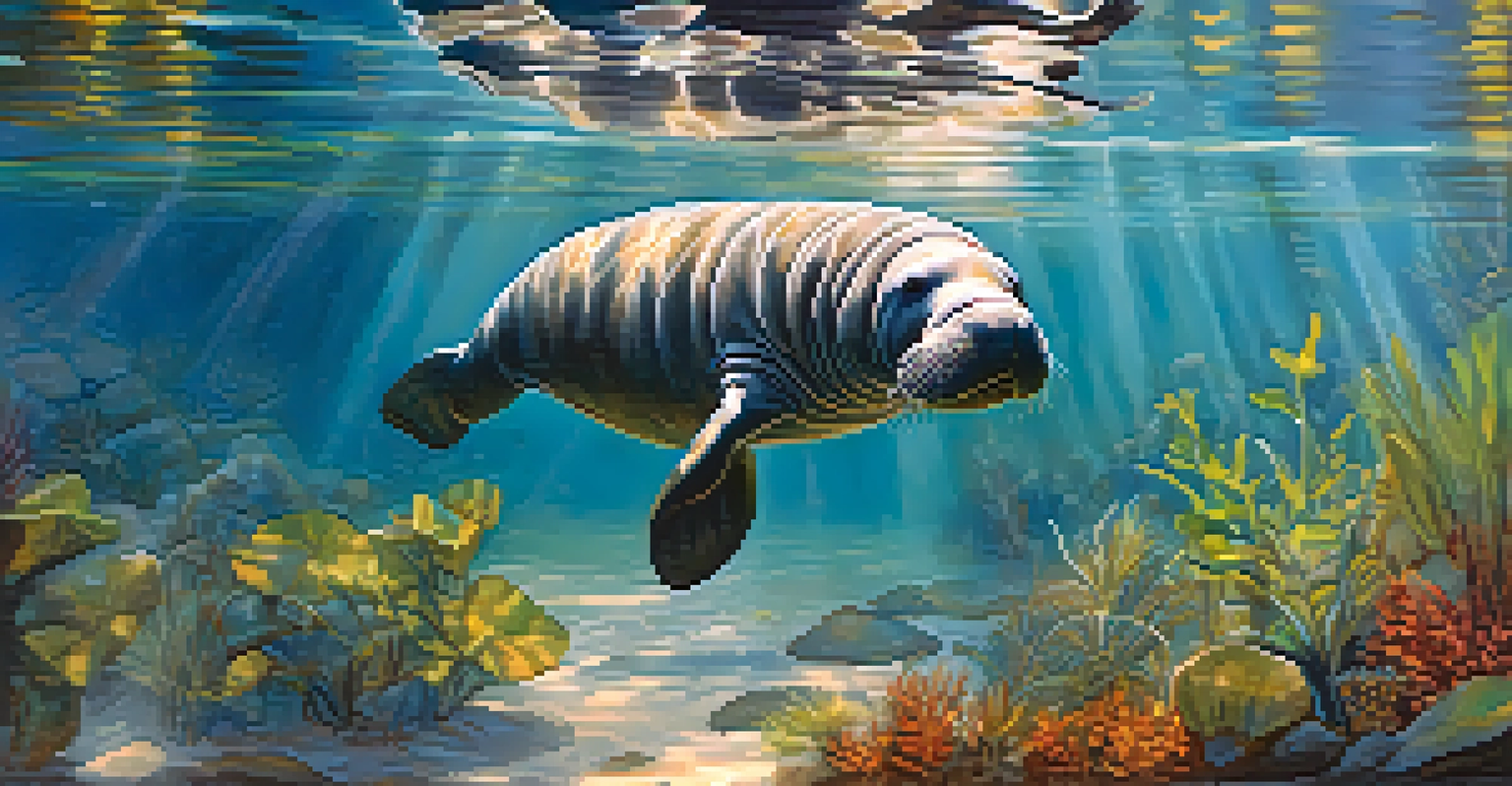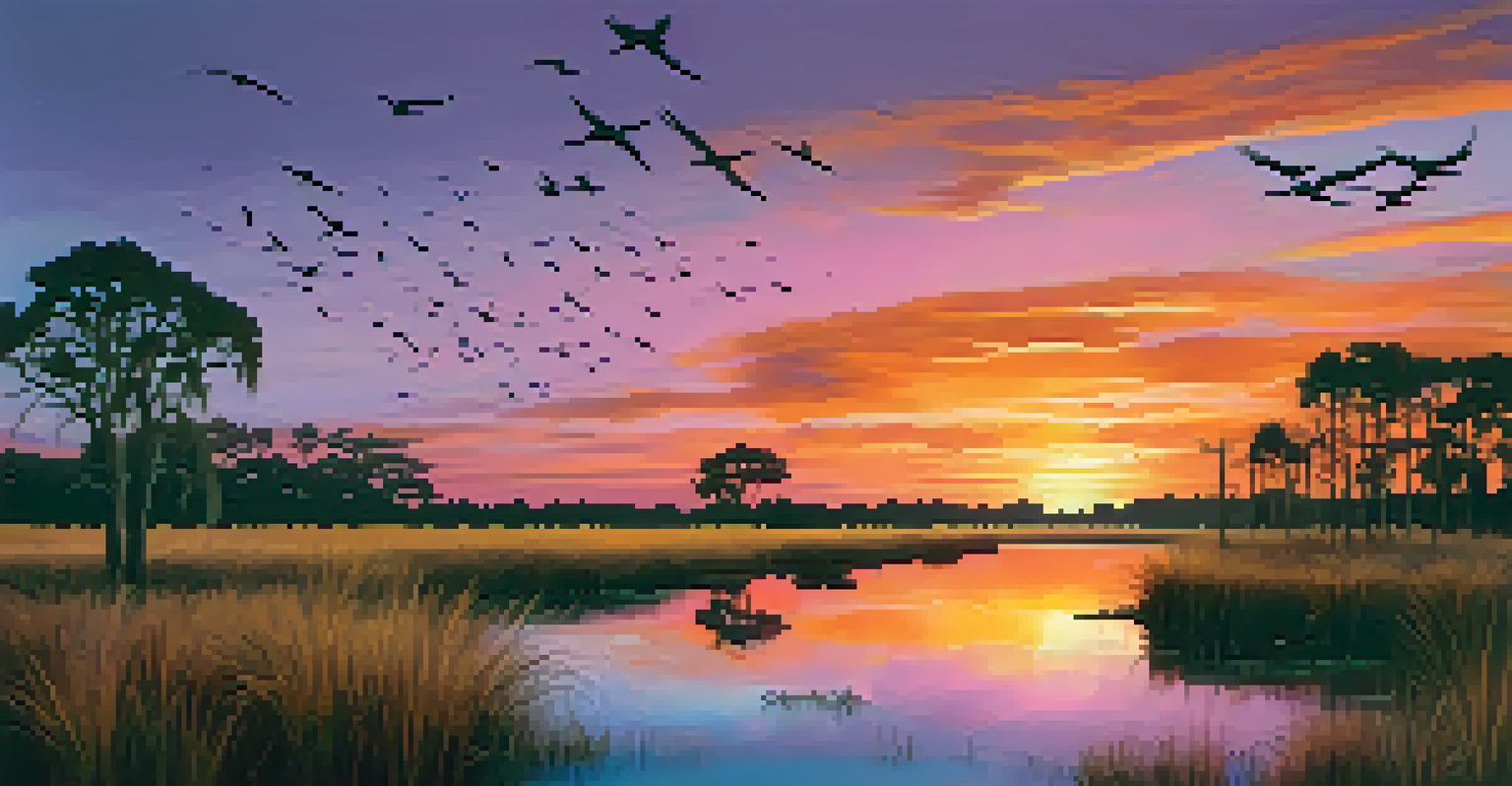Florida's State Parks: Biodiversity Hotspots and Conservation

Introduction to Florida's State Parks and Biodiversity
Florida’s state parks are more than just beautiful landscapes; they are biodiversity hotspots teeming with life. From its lush wetlands to sandy beaches, each park offers a unique glimpse into the state’s rich ecological tapestry. These parks are home to countless species, including some that are found nowhere else on Earth.
In every walk with nature one receives far more than he seeks.
In addition to being a haven for wildlife, Florida’s parks play a crucial role in conservation efforts. They provide critical habitats for endangered species and serve as vital research sites for scientists studying the effects of climate change and habitat loss. By protecting these areas, we’re not only preserving nature but also our natural heritage.
Visiting these parks allows people to connect with nature and understand the importance of preserving biodiversity. As you hike through the trails, you may spot everything from manatees in the springs to the rare Florida panther in the forests. Each encounter reinforces the need for ongoing conservation efforts in these vital ecosystems.
The Unique Ecosystems of Florida's State Parks
Florida's state parks showcase a variety of ecosystems, including wetlands, forests, and coastal areas. Each ecosystem is a complex web of life, where plants and animals interact in fascinating ways. For instance, the Everglades National Park is a unique subtropical wilderness that supports a diverse range of species, from alligators to migratory birds.

In contrast, parks like Myakka River State Park feature vast prairies and oak canopies that shelter a different set of wildlife. These ecosystems are not only beautiful but also serve essential functions, such as water filtration and carbon storage, helping to mitigate climate change. The diversity found in these parks is a testament to Florida's ecological richness.
Florida's Parks Are Biodiversity Hotspots
Florida's state parks serve as essential habitats for countless species, playing a crucial role in conservation and biodiversity.
Exploring these varied ecosystems offers visitors a chance to witness nature's wonders firsthand. Whether it's kayaking through mangroves or birdwatching in pine forests, every adventure highlights the importance of preserving these habitats for future generations.
Threats to Biodiversity in Florida's Parks
Despite their protective status, Florida's state parks face numerous threats that endanger their biodiversity. Urban development, pollution, and climate change are some of the most pressing issues impacting these fragile ecosystems. As cities expand, habitats are fragmented, making it difficult for wildlife to thrive.
The Earth does not belong to us: we belong to the Earth.
Invasive species also pose a significant threat to native flora and fauna in these parks. Plants and animals that have been introduced from other regions can outcompete native species for resources, leading to a decline in biodiversity. For example, the Burmese python in the Everglades has become a notorious predator, severely impacting local wildlife populations.
Addressing these threats requires collaboration between state agencies, conservation groups, and the public. By raising awareness and taking action, we can help mitigate these challenges and ensure that Florida's natural treasures continue to flourish.
Conservation Initiatives in Florida's State Parks
Florida is actively implementing conservation initiatives to protect its state parks and the biodiversity they harbor. Programs aimed at habitat restoration, species monitoring, and public education are pivotal in these efforts. For instance, the Florida Park Service works tirelessly to restore ecosystems affected by invasive species or natural disasters.
Volunteer programs also engage the community in conservation activities, such as planting native vegetation or participating in wildlife surveys. These hands-on experiences not only contribute to the parks' health but also foster a sense of stewardship among participants. When individuals connect with their environment, they often become passionate advocates for its protection.
Threats to Ecosystems Require Action
Urban development, climate change, and invasive species pose significant threats to Florida's unique ecosystems, necessitating collaborative conservation efforts.
Additionally, partnerships with universities and research organizations enhance scientific understanding and promote best practices in conservation. This collaborative approach ensures that strategies are informed by the latest research, making conservation efforts more effective and sustainable.
Recreational Opportunities and Biodiversity Education
Florida's state parks offer a plethora of recreational opportunities that also serve as platforms for biodiversity education. Hiking, camping, and birdwatching allow visitors to experience the beauty of nature while learning about the ecosystems they are exploring. Park rangers often conduct guided tours, sharing their knowledge about local flora and fauna.
Nature-based programs and workshops are designed to educate visitors about the importance of biodiversity conservation. For example, families can participate in junior ranger programs that teach kids about wildlife and habitats in a fun, engaging way. These experiences instill a sense of wonder and appreciation for nature from a young age.
By engaging in outdoor activities, visitors not only enjoy Florida's natural beauty but also gain insights into the delicate balance of ecosystems. This understanding can lead to greater advocacy for conservation efforts, encouraging people to protect these precious resources.
The Role of Technology in Conservation Efforts
Modern technology plays a significant role in enhancing conservation efforts in Florida's state parks. From satellite imaging to drones, these tools allow researchers to monitor ecosystems and wildlife populations more effectively. For instance, remote sensing technology can help track changes in land use and habitat conditions over time.
Citizen science initiatives also harness the power of technology by allowing the public to contribute to data collection. Apps and online platforms enable park visitors to report wildlife sightings or document environmental changes, creating a wealth of information that can aid conservationists. This collaborative approach fosters community involvement and raises awareness about local biodiversity.
Technology Enhances Conservation Efforts
Modern technology, including satellite imaging and citizen science, plays a vital role in monitoring Florida's ecosystems and engaging the public in conservation.
Furthermore, social media campaigns amplify conservation messages, reaching a broader audience. By sharing stories and images of Florida's unique wildlife and ecosystems, these platforms inspire others to appreciate and protect the natural world around them.
How You Can Help Protect Florida's Biodiversity
Everyone can play a role in protecting Florida's biodiversity, whether you're a local resident or a visitor. One of the simplest ways to make a difference is to practice responsible recreation. Staying on designated trails, respecting wildlife, and leaving no trace are all essential practices to minimize your impact on these delicate ecosystems.
Supporting local conservation organizations is another effective way to contribute. Donations, volunteering, or participating in community events can help fund important projects aimed at preserving natural habitats and species. Engaging with these organizations also keeps you informed about ongoing conservation efforts and how you can get involved.

Lastly, spreading awareness about the importance of biodiversity conservation can have a lasting impact. Share your experiences in Florida's state parks with friends and family, and encourage them to explore and appreciate these natural treasures. By fostering a culture of conservation, we can ensure that Florida's biodiversity remains vibrant for generations to come.